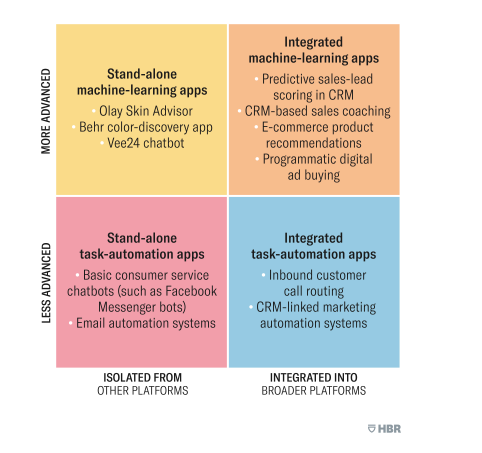It’s the question on most Marketers’ lips… What does AI mean for me and what should our team do about it?
Step 1: Figure out where AI can actually help you right now
As I’ve written elsewhere, at least for now, the expansive promise of many AI tools exceeds the value it goes onto to deliver for customers. Customer churn speaks louder than VC dollars.
That said, on the more optimistic side of the coin, there are more constrained areas where tooling is ready to support today; Ramp’s latest data shows products provided by Anthropic and Perplexity are especially popular.
Common functional use cases are often centered around what Tomasz Tunguz has deemed “toil”. In other words, anything which is mindless repetitive work: reviewing alerts, triaging leads, data entry, pulling numbers or facts out of dense documents, changing parameters from annual to weekly ones and so on. Put simply, that which is necessary but not strategic, needs to be done but is not fun to be done.
The fastest way to identify toil is to do a simple calendar review; figure out which parts of your day are currently generating drag, annoyance or boredom, and list them out in a communal channel for the team to see. Then create an internal poll (you don’t need anything flashier than a Google Form) and decipher where the power law exists: what one or two pieces of toil could you take away that would save an outsized proportion of time for people.
Step 2: Automate where possible, but do the work where automation is impossible
In most instances where a marketing department stack ranks the most important piece of toil, chances are that Anthropic’s Claude, Perplexity AI or Zapier will be your best friend for whatever comes next.
Let’s pick an easy example, for toil which often falls by the wayside: community comment-management.
I love this example of how Zapier is helping automate the vital but non-thoughtful parts of community management, by providing timestamps on YouTube comment requests.
If you’re trying to achieve with AI tooling becomes more advanced than toil-elimination, I’d start to be suspicious about whether it’s removing or adding yet another work stream to your day-to-day.
If you insist on doing more, it’s worth dissecting the task into “isolated” or “integrated”, and then levels of advancement; per this handy HBR quadrant.
I rarely hear of businesses building their own stand-alone machine-learning apps (e.g. HBR’s cited Olay Skin Advisor, from way back in 2016) which move the needle for customers and/or isn’t an hideously expensive, laborious undertaking. An off-the-shelf tool like Intercom is going to be more customisable, more effective and a much smaller resource commitment. The less advanced elements (in the bottom half of the quadrant) were achievable before the “AI revolution” (e.g. through Hubspot) and the top right quadrant (integrated/advanced) is almost always a fully-fledged new work stream that needs setting up with individuals from multiple departments.
It’s adding more to the plate, rather than removing elements from it.
Per Yann LeCunn’s (Professor at NYU and Chief AI Scientist at Meta) comments on LLMs, we have to respect the limitations of these tools:
The trillion-dollar opportunity with AI is not to let some “click-this-button” tool do your job for you, it’s to give you marginal gains in the form of recouped time. If you and everyone on your team had 10-20% of their week back, with the “toil” taken away… Just imagine what they could do with it.
Step 3: Figure out what you’re going to do with the new spare time
The most under discussed element of gearing your Marketing department up for success in a toil-free AI age? Figuring out what the new spare time can give you. Of course every business and Marketing department will have different needs and objectives, but the big three for me in 2024 are clear to see.
Personality led content: your team (especially in B2B) are your best commercial weapons. Encourage and equip them to create video, written and audio content that will bring their most human self to life. You’ll see more leads come through, you’ll hire better people (employer branding goes through the roof when prospective employees see how great your existing team is) and they’ll start to be considered domain experts which is increasingly critical in sales processes.
Work out how to take more shots on goal: especially in B2C, this is the holy grail. The concept of a single big brand launch is over, and you need to be using social to having more attempts to being part of the cultural conversation. Your big set-piece TV ad? Fewer and fewer people are seeing it every year. It might make former colleagues on LinkedIn very happy, but if your customers aren’t giving you brand equity in exchange for that ad… it’s worth very little, almost nothing. If you imagine CMOs are just folks at the dartboard, the best ones are now not trying to hit the bullseye with one very expensive dart. Instead, they’re winding up as many darts as possible, with as much cultural context and creativity as possible, then setting up their empowered and decentralised teams to throw them repeatedly - knowing one will hit at the right moment. A bit like this brilliant McDonald’s post on X this week.
Get the fundamentals in order: Above all else, use the time to get the basics up to scratch. Not a little bit shaped up, but properly functioning. That means you need a TikTok account (because it’s 2024 and you probably want to sell to folks under-35), you need a basic CRM flow going, you need to figuring out how you play in a cookie-filled age with everything playing out on dark social… These are the nuts and bolts for Marketing departments.







